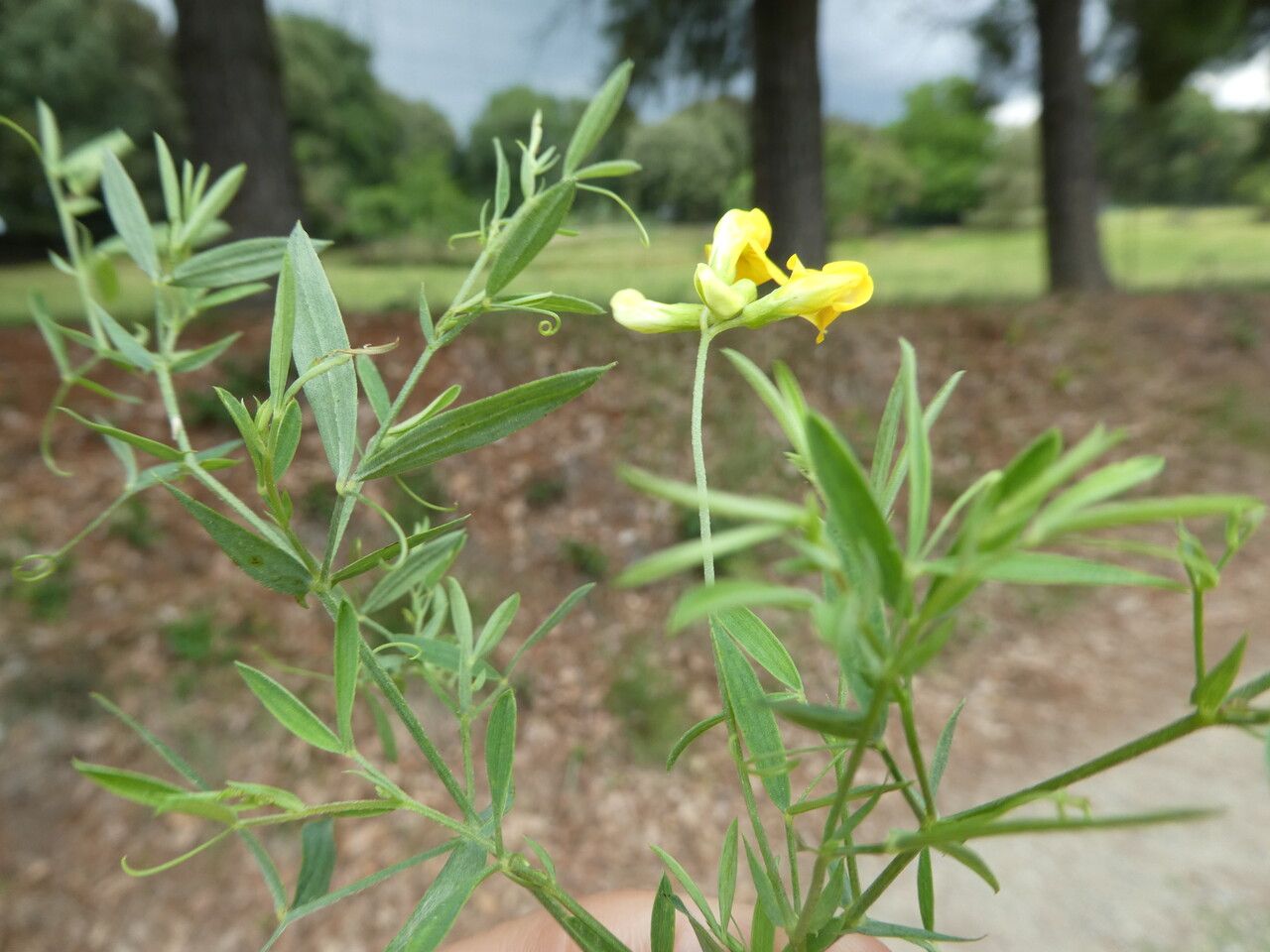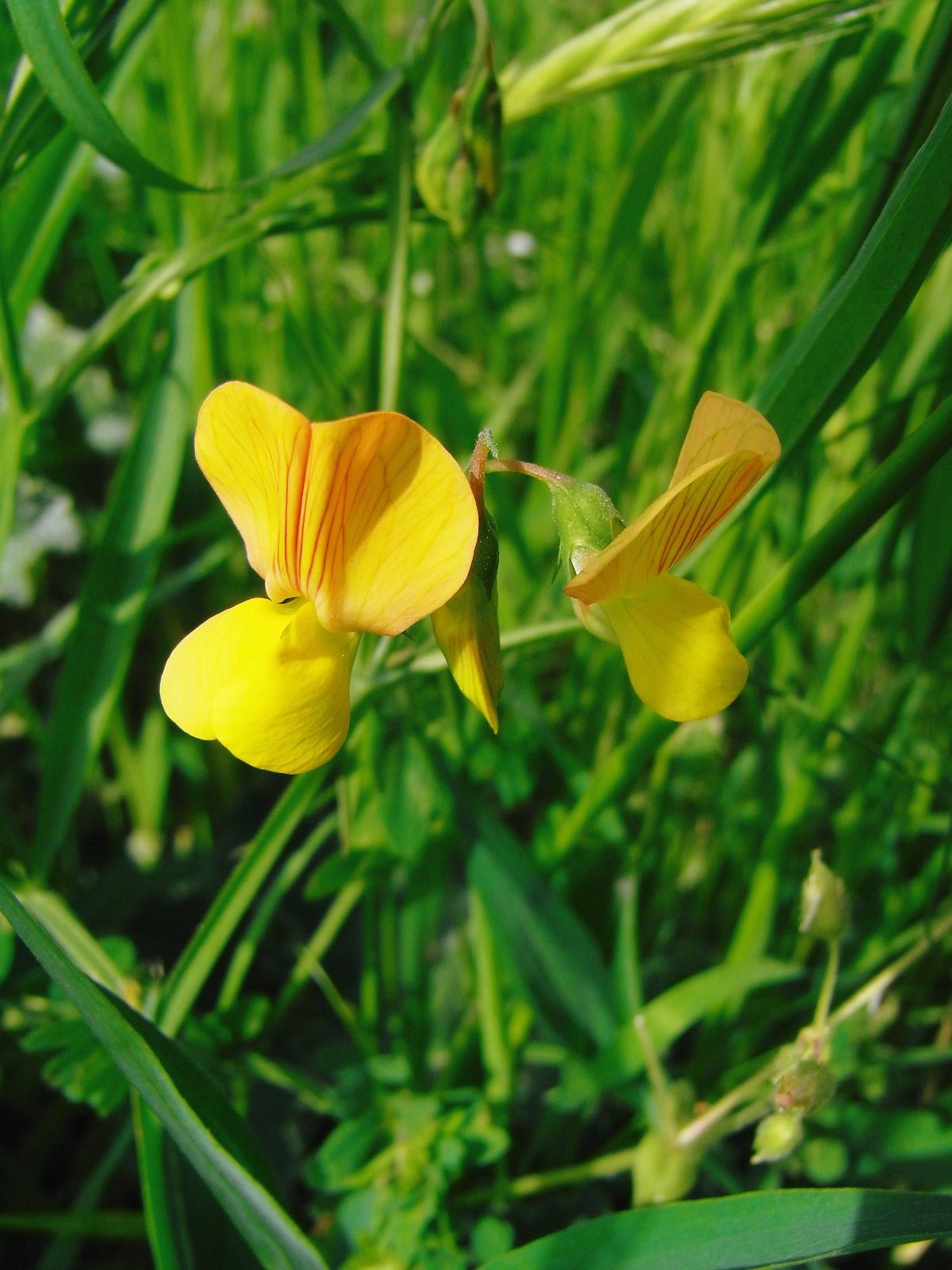Annual Sweet Pea
lathyrus annuus
Also known as: ["Sweet Pea","Annual Pea"]
Overview
A fast-growing annual vine with fragrant, colorful flowers, often used for ornamental purposes.
Benefits & Perks
["fragrant flowers","wildlife attractant (bees, butterflies, birds)","fast growing"]
Botanical Classification
| Phylum: | Magnoliophyta |
| Class: | Magnoliopsida |
| Order: | Fabales |
| Family: | Fabaceae |
| Genus: | Lathyrus |
| Botanical Name: | Lathyrus annuus |
Plant Characteristics
Basic Information
- Category: Flowers
- Suitable Location: garden bed or container in a sunny spot
- Suitable For:
- Is Weed: No
- Allergenicity: low
Environmental Needs
- Climate: {"temperatureRange":"5–30°C"}
- Hardiness: {"zones":"7–10"}
- Misting: rarely required, only if ambient humidity is very low
- Drainage: Fast-draining to prevent waterlogging.
- Soil Type: Well-draining, loamy soil with added organic matter.
Maintenance Level
- Maintenance Level: moderate
- Toughness Level: moderate
- Pruning Frequency: As needed throughout the growing season; light pruning after flowering can promote reblooming.
- Pruning Intensity: Light to moderate; avoid heavy pruning as it may reduce flowering.
Care Details
Ideal Sunlight Coverage:
Full sun (6–8 hours/day); tolerates partial shade but blooms best in direct sunlight.
Sunlight Tolerance Tips:
Acclimate plants gradually to full sun if moved from shade; protect from intense midday sun in hot climates; ensure adequate airflow to prevent mildew.
Care Requirements
Care Difficulty
easyeasy
Sunlight
full sun to partial shade
Rotate pots for even growth; use sheer curtains to filter harsh sunlight indoors; avoid placing in drafty areas.
Watering
every 7–10 days during active growth, reduce in winter
Water thoroughly but infrequently; ensure good drainage; avoid wetting foliage to prevent fungal diseases.
Soil
well-drained, loamy soil with moderate organic matter
pH: Slightly acidic to neutral (6.0–7.0).
Avoid heavy clay soils; ensure soil is loose and airy; test pH if issues arise.
Temperature
Prefers cool to moderate temperatures (60–75°F/15–24°C); can tolerate light frosts but not prolonged cold.
Avoid sudden temperature shifts; protect from cold drafts; maintain consistent temperatures for best growth.
Fertilizing
every 4–6 weeks during growing season
Dilute fertilizer to half strength to avoid burning roots; fertilize after watering to prevent salt buildup; avoid fertilizing newly planted or stressed plants.
Propagation
Methods
Stem cuttings or seed; seeds are the most reliable method for Lathyrus annuus.
Step-by-Step Propagation Guide
- Prepare medium.
- Plant seeds or cuttings.
- Water lightly.
- Maintain humidity.
- Provide warmth.
- Transplant once established.
Best Time: Spring or early summer when the plant is actively growing.
Environment
Warm (65–75°F/18–24°C), humid, and bright but indirect light.
Medium
Well-draining seed starting mix or perlite and peat moss for cuttings.
Hormone
Not necessary for seeds; rooting hormone can help for stem cuttings.
Timeline
Seeds germinate in 7–14 days; cuttings root in 2–4 weeks.
Tools Needed
Seed trays, pots, rooting hormone (optional), misting bottle, heat mat (optional).
Quick Tips
Keep soil consistently moist but not waterlogged; provide bottom heat for faster germination; thin seedlings if overcrowded.
Pruning & Repotting
Pruning Guide
Method
Pinch back tips to encourage branching; remove spent flowers to prolong blooming.
Pruning Plan
Focus on removing dead or damaged growth and encouraging bushier plants; minimal pruning needed for this annual.
Tools
Clean, sharp scissors or pruning shears.
Checklist
Sanitize tools; prune dead or diseased parts; remove spent blooms; shape lightly if desired.
Repotting Guide
Best Season
Spring, at the start of the growing season.
Pot Size
One size up from current pot; ensure good drainage holes.
Method
Gently remove plant; trim any dead roots; place in a slightly larger pot with fresh soil; water lightly.
Suggestions
Generally not required as Lathyrus annuus is an annual; if grown in pots, repot only if root-bound.
Checklist
Check root health; use fresh soil; ensure proper drainage; water after repotting.
Advanced Care Tips
Watering Mastery
Watering Checklist
Check soil moisture; water deeply; ensure drainage; avoid wetting leaves.
How to Apply Water Properly
Water at the base of the plant, focusing on the root zone; water until it drains from the bottom; avoid overhead watering.
Watering Schedule Tips
Water deeply once the top inch of soil feels dry; reduce frequency in winter to prevent root rot.
Soil Improvement
Add compost or well-rotted manure for fertility; mix in perlite or sand for drainage.
Temperature Stress Management
Signs of Temperature Issues
Wilting, yellowing leaves, stunted growth, or flower bud drop.
Cold Stress
Slows growth, may cause leaf damage or dieback in prolonged cold; vulnerable to frost if not protected.
Solution: Mulch to insulate roots; move potted plants indoors or to a sheltered location; cover with frost cloth if frost is expected.
Hot Stress
Leaves may scorch, wilt, or drop; flowering may be reduced in extreme heat.
Solution: Provide shade during peak heat; increase watering frequency; use mulch to retain soil moisture.
Fertilizing Guide
Fertilizing Checklist
Check fertilizer type; dilute correctly; apply during active growth; avoid over-fertilizing.
Fertilizing Method
Use balanced liquid fertilizer every 4–6 weeks during active growth; reduce or stop in winter.
Common Problems & Solutions
Toxicity Warning
Cats
Slightly ToxicCats are susceptible to the toxic amino acids in Lathyrus annuus, which can cause gastrointestinal distress and neurological issues upon ingestion of seeds or young pods.
⚠️ Symptoms:
🌿 Toxic Parts:
⚡ Toxic If:
if eaten
Dogs
Slightly ToxicIn dogs, ingestion of Lathyrus annuus seeds or young pods can lead to gastrointestinal upset and potential neurological symptoms due to the presence of toxic amino acids.
⚠️ Symptoms:
🌿 Toxic Parts:
⚡ Toxic If:
if eaten
Humans
Slightly ToxicLathyrus annuus contains toxic amino acids that can cause neurolathyrism, a condition affecting the nervous system. Prolonged consumption of the seeds or young pods can lead to irreversible neurological damage.
⚠️ Symptoms:
🌿 Toxic Parts:
⚡ Toxic If:
if eaten
Frequently Asked Questions
Q: Is Lathyrus annuus toxic to pets?
A: Yes, it is mildly toxic to dogs and cats if ingested.
Q: How often should I water Lathyrus annuus?
A: Water moderately, allowing the soil to dry slightly between waterings.
Q: Does Lathyrus annuus attract wildlife?
A: Yes, it attracts bees, butterflies, and birds due to its fragrant flowers.
Quick Reference
| Family: | Fabaceae |
| Care: | easy |
| Light: | full sun to partial shade |
| Water: | every 7–10 days during activ |
Get Expert Care Tips
Download the Plantious app for personalized care reminders and plant identification!
Google Play App Store








